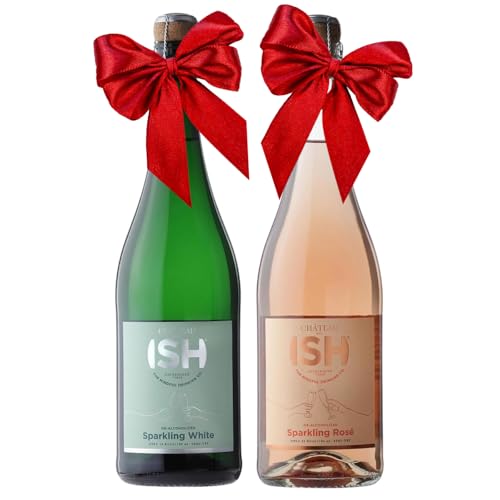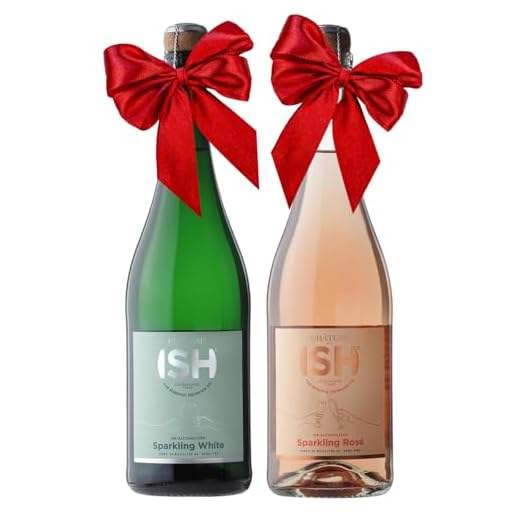



In a standard container of pale libation, you can expect approximately 600 to 625 kilojoules. This figure varies depending on the specific type and brand, as well as the residual sugars present in the liquid. For those mindful of their intake, understanding this can assist in making informed choices during meals or social gatherings.
For instance, a drier variety generally contains fewer kilojoules compared to its sweeter counterparts. If you prefer a crisp Sauvignon Blanc, lean towards options with lower sugar content to keep the numbers down. Conversely, sweeter selections like Riesling might elevate the total significantly.
Pairing this beverage with food can also impact your overall energy consumption. To balance the enjoyment, consider lighter fare such as seafood or salads, which complement the drink without adding excessive kilojoules. By selecting wisely, you can savor flavors while maintaining control over your dietary goals.
Understanding the Energy Content in a Standard 750ml Serving of Light-Hued Varietals
A standard 750ml serving of light-hued varietals contains approximately 600 to 700 units of energy. This figure can fluctuate based on various factors, including the specific type and sweetness level of the drink.
For a more precise breakdown, consider the following:
- Dry Varietals: Typically range from 580 to 620 units.
- Semi-Dry to Off-Dry Options: Generally contain between 620 and 680 units.
- Sweeter Choices: Can exceed 700 units, especially dessert styles.
When selecting a light-hued option, keep in mind the following:
- Check the label for residual sugar content; higher sugar often means more energy.
- Consider the alcohol level; stronger options usually carry more energy.
- Pairing with food can influence how you perceive the energy content, as flavors and textures interact.
Enjoying this beverage in moderation can enhance your experience. Always pair with complementary dishes to maximize enjoyment and balance the overall flavor profile.
Caloric Content of Different Types of White Wine
Understanding the energy content of various kinds of light-colored fermented beverages can help you make informed choices. Typically, a standard serving of dry varieties features around 120 to 125 units of energy per 5-ounce glass. In contrast, sweeter options can reach up to 200 units for the same quantity. This difference is primarily due to the sugar levels present in these drinks.
Dry Varieties
Among the dry selections, Sauvignon Blanc and Pinot Grigio stand out with lower sugar content, resulting in a lighter energy profile. Expect approximately 120 units in a 5-ounce serving. These selections are great for those looking to enjoy a refreshing drink without excessive energy intake.
Sweeter Options
For individuals who prefer a bit of sweetness, Riesling and Moscato offer delightful flavors but come with higher energy counts. A 5-ounce serving of these can contain between 150 to 200 units. Ideal for pairing with desserts or enjoying solo, these selections provide a richer experience but at a cost to your daily energy allowance.
Understanding Alcohol by Volume (ABV) and Calories
For those seeking to manage their energy intake, knowing the ABV is crucial. Typically, the higher the ABV, the more energy contents are present due to increased alcohol concentration. A standard dry white, averaging around 12-13% ABV, can yield approximately 600-700 units of energy per 750ml serving. This varies with sweetness and production methods, which directly influence the composition.
When evaluating options, consider that sweeter varieties usually contain more residual sugars, thus increasing their energy contribution significantly. For a more health-conscious choice, opt for dry selections, as they typically have less sugar and fewer energy units.
Tracking consumption becomes easier when you’re aware of these details. By selecting wines with lower ABV and knowing their respective energy contributions, you can enjoy your experience while maintaining balance in your dietary choices.
Pairing wines with meals is not just about taste but also involves considering the total energy intake. For instance, a rich dish might benefit from a wine with a higher ABV to complement and balance flavors, while lighter fare could be enhanced by a lower ABV selection.
Ultimately, being informed about ABV and its relationship to energy helps in making better choices, ensuring enjoyment without excess.
Calculating Calories Based on Sugar Levels in Wine
To estimate the energy content from sugar in fermented grape beverages, focus on the residual sugar level. Each gram of sugar contributes approximately 4 kilocalories. For example, if a specific variant contains 10 grams of residual sugar per liter, this translates to about 40 kilocalories from sugar alone.
Different styles exhibit varying sugar profiles. Dry types usually have lower sugar levels (1-2 grams per liter), while off-dry and sweet variants can range from 20 to over 100 grams per liter. Hence, a sweeter selection can significantly increase the overall energy content.
It’s also crucial to consider the alcohol content. Alcohol contributes roughly 7 kilocalories per gram. Therefore, a beverage with higher alcohol by volume (ABV) will inherently have more energy. A 12% ABV drink equates to around 96 kilocalories from alcohol alone in a liter.
Combining these two factors–sugar and alcohol–allows for a more accurate approximation of the total energy content. For instance, if a specific type has 20 grams of sugar and 12% ABV, the calculation would be: (20 grams of sugar x 4) + (96 kilocalories from alcohol) = 80 + 96 = 176 kilocalories per liter.
Understanding these numbers aids in making informed choices based on dietary preferences and lifestyle needs. Tailoring selections to fit personal goals can enhance enjoyment and satisfaction during any tasting experience.
The Role of Serving Size in Caloric Intake
Understanding portion control is crucial for managing energy consumption. The typical serving of fermented grape juice is 5 ounces (about 150ml). This amount contains approximately 120-130 units depending on the type. By adhering to this standard, one can enjoy a glass without significantly impacting daily energy goals.
Adjusting Consumption
When enjoying a larger vessel, such as a 750ml container, it’s essential to calculate how many servings it contains. A full container offers about five servings. If I choose to consume the entire amount, the energy intake escalates rapidly, making moderation key. The enjoyment of flavors should not lead to overindulgence.
Practical Tips for Serving
To maintain a balanced approach, consider using a measuring cup or a wine pourer to ensure each serving is consistent. This practice not only aids in managing energy intake but also enhances the overall tasting experience by allowing time to savor each sip.
| Serving Size (oz) | Estimated Energy Content |
|---|---|
| 5 oz | 120-130 |
| 10 oz | 240-260 |
| 15 oz | 360-390 |
By practicing mindful pouring and being aware of serving sizes, one can fully enjoy the nuances of flavor while keeping energy levels in check. This balance leads to a more fulfilling experience overall.
Comparing Alcoholic Beverages: A Caloric Perspective
In terms of energy content, a standard serving of beer, typically 12 ounces, can deliver around 150 to 200 units, depending on the style. Light options may offer lower figures, while craft varieties often exceed the higher end. Spirits such as vodka or whiskey contain approximately 100 to 120 units per 1.5-ounce shot, but mixers can significantly increase this total. Cocktails, depending on ingredients, can range from 200 to 500 units or more.
When evaluating the energy profile of these beverages, it’s essential to consider the serving size and alcohol by volume (ABV). Higher ABV often correlates with increased energy, particularly in spirits. However, sweetened cocktails or those mixed with sugary sodas can amplify the unit count considerably, making them less favorable if monitoring intake.
For those who appreciate a balanced approach to enjoyment and health, it’s wise to choose options with lower added sugars. Dry varieties of white beverages typically feature fewer units than their sweeter counterparts, aligning better with a mindful consumption strategy. Always be conscious of the total volume consumed; moderation is key.
In summary, understanding the energy contributions of different types of alcoholic drinks allows for informed choices. Whether enjoying a glass of a crisp white or exploring the robust flavors of spirits, being aware of what you’re consuming can enhance both your experience and your well-being.
Impact of Wine Production Methods on Caloric Content
Fermentation techniques significantly influence the energy density of a liquid. For example, the choice between spontaneous and cultured fermentation can affect residual sugars, which are a primary source of energy. Cultured yeasts often yield a cleaner profile, while spontaneous methods may retain more sugars, thus increasing energy content.
Factors Influencing Energy Levels
- Grapes Selection: Different varietals have varying sugar concentrations. Higher sugar levels in grapes lead to greater energy potential during fermentation.
- Malolactic Fermentation: This secondary fermentation reduces acidity and can lead to a creamier texture, often enhancing sweetness and contributing to higher energy values.
- Oak Aging: The aging process can introduce additional compounds, altering sweetness perception and possibly influencing caloric content.
Adjustments in residual sugar during production can also shift the energetic profile. For instance, off-dry styles retain more sugar, while bone-dry versions have minimal residual sugars, leading to reduced energy values.
Production Techniques and Their Effects
- Carbonic Maceration: This method preserves fruitiness and can lead to lower energy due to reduced extraction of tannins and sugars.
- Skin Contact: Extended skin contact can enhance phenolic compounds but may not significantly impact energy levels unless residual sugars are high.
- Chaptalization: Adding sugar before fermentation can elevate energy levels, as it increases the initial sugar content of the liquid.
Understanding these production methods allows for better choices when selecting a beverage based on energy content. The interplay between fermentation techniques and grape characteristics ultimately shapes the final product’s energy profile, making it essential for enthusiasts to consider these factors when assessing options.
Tips for Enjoying White Wine While Managing Caloric Intake
Opt for lighter varietals like Pinot Grigio or Sauvignon Blanc, which typically contain less residual sugar and fewer total units of energy. This choice can significantly reduce your intake while still providing a delightful experience.
Consider serving your drink in smaller glasses. A reduced pour can help you savor each sip while keeping the amounts in check. This approach allows for enjoyment without overindulgence.
Pairing with food can enhance flavors and create a fulfilling experience. Opt for lighter dishes such as salads, seafood, or grilled vegetables. This strategy not only complements the beverage but also provides a satisfying meal, which can help control overall consumption.
Keep track of your servings. Recording your intake can create awareness of your choices, making it easier to manage your energy consumption effectively.
Try to avoid sugary mixers or sweet snacks that can compromise your goals. Sticking to simple pairings without added sugars will help you maintain balance while enjoying your favorite drink.
Stay hydrated. Drinking water between servings can help you enjoy the tasting experience while limiting the overall intake of energy. It also enhances your palate for the next pour.
For more insights on managing energy while enjoying beverages, check out .









